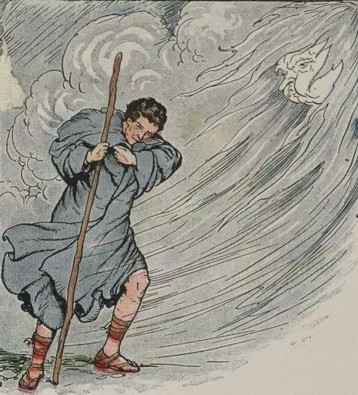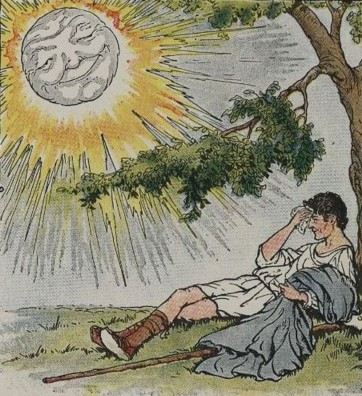The North Wind & The Sun
Illustrates Influence over Force, Change Readiness, Sustainable Transformation
In Agile teams and organizations, pressure often masquerades as progress. We push initiatives. We mandate compliance. We enforce timelines. But real change cannot be forced. It must be invited. This Aesop fable1 reminds us that influence, not intensity, creates the conditions for lasting transformation.

Once upon a time, the North Wind and the Sun spotted a traveler walking down a dusty road, wearing a heavy cloak. They began to argue over who was stronger.
“I am,” said the Wind. “Watch me strip that cloak right off him.”
With a loud roar, the Wind blew hard. It howled and blasted, nearly knocking the traveler off his feet. But the harder the Wind blew, the tighter the traveler clutched his cloak.

The Sun, calm and quiet, said, “Let me try.”
The Sun stepped forward and warmed the air. Its gentle rays wrapped the traveler in comfort. Soon, the traveler loosened the cloak, then took it off completely, wiping his brow and smiling as he walked.
The Wind stormed away in frustration. The Sun only shone brighter.
Lessons Learned
Influence is Stronger Than Force
Agile coaches often see organizations try to "blow away" resistance with pressure. The result is usually defensiveness, fear, or superficial change. Like the Sun, lasting impact comes from warmth, clarity, and support. We influence best when we create an environment where change feels safe, not forced.
Behavior Change Begins With Safety
The traveler removed the cloak not because he was told to, but because he wanted to. Teams need autonomy and safety to do the same. When people feel respected and trusted, they are more open to new behaviors, roles, and mindsets.
Pushing Hard Can Backfire
The more the Wind pushed, the more the traveler resisted. When Agile transformations rely on command-and-control tactics, they often produce the opposite of what they intend. Resistance increases, compliance becomes performative, and morale drops.
Trust the Power of Gentle Persistence
These roles exist to show what is really happening. They surface team dynamics, system constraints, and leadership patterns that block progress. When they are ignored or sidelined, the organization loses its ability to reflect and improve. A good coach or Scrum Master does not exist to please. They help teams and leaders see clearly and grow.
Choose Compassion over Confrontation
In teams, tension can arise. Stakeholders get frustrated. Leaders get impatient. The parable reminds us that kindness does not equal weakness. Compassion builds connection and connection creates momentum.
Coaching Tips
- Replace Push with Pull: Invite change instead of enforcing it. Use curiosity, not compliance. Ask questions that open doors: “What might we try instead?” or “What's getting in the way?”
- Model the Mindset: Like the Sun, be the example. Embody the behaviors you hope to grow in the team: calm reflection, adaptive thinking, sustainable pacing.
- Name the Wind: In Retrospectives, explore what “Wind” behaviors are showing up. Are we forcing progress? Are we pushing people past their limits?
- Use the Parable in Stakeholder Briefings: Help executives and sponsors understand why top-down mandates may create short-term movement but rarely create meaningful change.
- Warm the System: Build psychological safety. Normalize learning. Reduce the threat of failure. The traveler shed the cloak when the temperature felt safe enough to do so.
Agile change is not a battle of wills. It is not about who shouts loudest or delivers the hardest deadline. It is about shaping the environment so that change becomes natural, even welcome.
Like the Sun, the best coaches and leaders radiate warmth, consistency, and quiet power. That is what melts resistance and creates room for growth.
If your team is clinging to old habits, do not blow harder. Shine warmer. The cloak will come off when the time is right.


